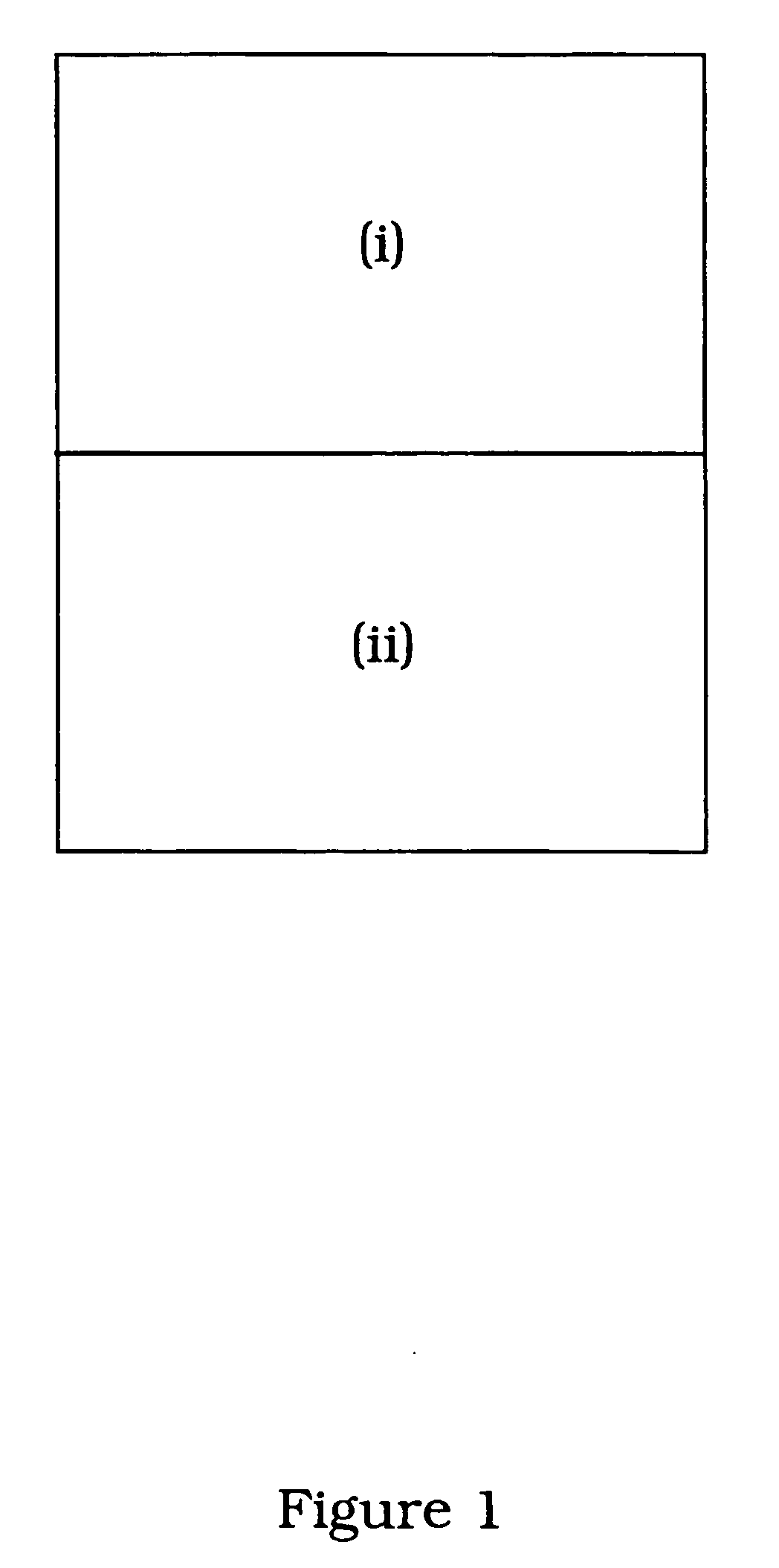Method of screening
- Summary
- Abstract
- Description
- Claims
- Application Information
AI Technical Summary
Benefits of technology
Problems solved by technology
Method used
Image
Examples
example 1
Antibodies Against Merezoite Surface Protein (MSP)-119 are a Major Component of the Invasion Inhibitory Response in Individuals Immune to Malaria
Materials And Methods
Plasmids
[0230] Construction of the plasmids pFfM3′ and pPcM3′ has been described previously (O'Donnell, R. A. et al. 2000 supra). The plasmid pPcMEGF was constructed by the insertion of a 1,200-bp XhoI fragment into the unique XhoI site of a plasmid pHC2 (Triglia, T., Healer, J., Caruana, S. R., Hodder, A. N., Anders, R. F., Crabb, B. S. and Cowman, A. F. (2000) Mol. Microbiol. 38:706-718). This target fragment comprises a 900-bp internal region of the P. falciparum MSP-1 gene fused in frame to the MSP-119 region of P. chabaudi. The fragment was generated by PCR amplification from P. falciparum (D10) and P. chabaudi (adami DS) genomic DNA (gDNA) using the oligonucleotide pairs Pf#1 5′-ATTTCTCGAGAATCCGAAGATAATGACG-3′ (1), PfEGF-R 5′-GAAACATCCAGCATTTTCTGGAAGTTTGTTCCTATGCATTGGTGTTGTGAAATG-3′ (2). The resulting amplico...
example 2
Generation of Recombinant Parasites
Methods
Plasmids
[0253] The pHCl plasmid vector has been described (Crabb, B. S. et al. 1997 supra). XhoI insers for cloning into this plasmid were amplified from the relevant genomic DNA using the following oligonucleotides (restriction endonuclease sites are bolded): Pf#1,5′-ATTTCTCGAGAATCCGAAGATAATGACG-3′ (5); Pf#2,5′-ATTGCTCGAGATCGATGTTTAACATATCTTGGAATTTTTCC-3′ (6); Pf#3, 5′-TTTAACTCGAGCATTTTTTAAATGAAACTG-3′ (7); Pf#4,5′-CATCTAGATGTCTGAAACATCCAG-3′ (8); Pc#1,5′-GGATGTTTCAGACATCTAGATGGTAAAG-3′ (9); Pc#2,5′-TCACTCGAGTTAAAATAAATTAAATACAATTAATGTG-3′ (10). To derive the pAMSPI and pPfM3′ fragments, Pf#1 / Pf#2 and Pf#1 / Pf#3 were used, respectively. to derive the pPcM3′ insert, amplicons from Pf#1 / Pf#4 and Pc#1 / Pc#2 were first digested with XbaI and ligated. The pPcM3′ vector is identical to pHCl except that it has a litmus 28 (NEB) backbone.
Parasite Transfection
[0254] Plasmids were transfected into P. falciparum parasites (D10 line) essentially ...
example 3
A New Rodent Model to Assess Blood-Stage Immunity to the Plasmodium Falciparum Antigen MSP-119 Reveals a Protective Role for Invasion Inhibitory Antibodies
Materials And Methods
Plasmids
[0259] To create the pPb-PfM19 replacement plasmid, 1.3 Kb of P. berghei MSP-1 targeting sequence was firstly fused in frame to the MSP-119 region of P. falciparum upstream from the first cysteine residue of EGF domain 1. This was achieved by PCR amplification of P. berghei ANKA and P. falciparum D10 genomic DNA (gDNA) using the oligonucleotide pairs PbF (5′-CGGGGTACCATCGATAAATACTTTACCTCTGAAGCTGTTCC (15)) and PbR1 (5′-TACATGCTTAGGGTCTATACCTAATAAATC (16)), and PbPfF (5′-GGTATAGACCCTAAGCATGTATGCGTAAAAAAACAATGTCCAGAA (17)) and PfR (5′-TGCTCTAGATTAAATGAAACTGTATAATATTAAC (18)), respectively, and sewing the products together via PCR using the primers PbF and PfR. The insertion of KpnI (underlined) and XbaI sites (boldface) into the oligonucleotides facilitated cloning of the resulting fragment into the ...
PUM
| Property | Measurement | Unit |
|---|---|---|
| Immunogenicity | aaaaa | aaaaa |
| Strain point | aaaaa | aaaaa |
| Inhibition | aaaaa | aaaaa |
Abstract
Description
Claims
Application Information
 Login to View More
Login to View More - R&D
- Intellectual Property
- Life Sciences
- Materials
- Tech Scout
- Unparalleled Data Quality
- Higher Quality Content
- 60% Fewer Hallucinations
Browse by: Latest US Patents, China's latest patents, Technical Efficacy Thesaurus, Application Domain, Technology Topic, Popular Technical Reports.
© 2025 PatSnap. All rights reserved.Legal|Privacy policy|Modern Slavery Act Transparency Statement|Sitemap|About US| Contact US: help@patsnap.com



